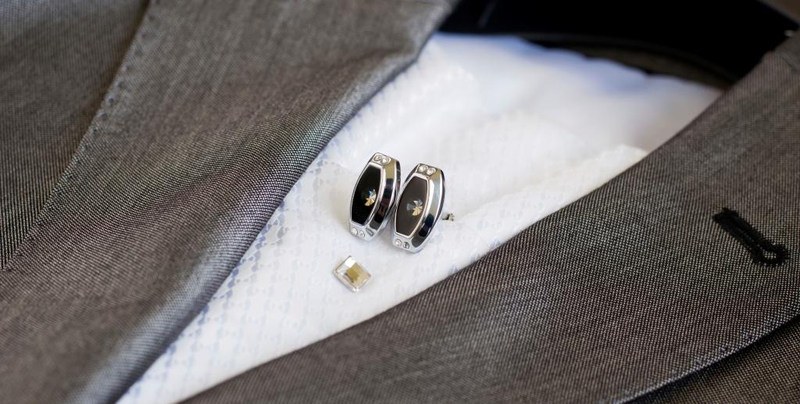Why more needs to be done to leverage smart textiles for the future of wearables

(c)iStock.com/sapfirr
To fully leverage smart textiles for the future for wearables, we need a manufacturing shift.
Smart textiles and interactive garments have played a strong role in the wearables space for the last twenty years, driven by visionary design prototypes such as the Philips New Nomad project from 1998, exploring the integration of digital interactivity into a range of apparel and jewellery.
Since then, we have seen a proliferation of prototypes and small release products, but a major impediment to mass-market penetration of smart textile wearables and smart apparel remains in shifting to large scale manufacturing, including scaling issues, reliability, and cost.
From what we have seen however, the future of wearables is firmly anchored in smart textile innovation, so as to bring the digital experience closer to our bodies and to our everyday experience. For us, as well as our CEO Stephane Marceau, clothing is the ultimate wearable medium. “What’s the only wearable that we have all been wearing our entire life, from the day we were born, and we are all wearing now? The answer is clothing.”
Dr. Amanda Parkes, chief of technology and research at hybrid fashion incubator Manufacture New York, agrees that “the evolution of wearables towards smart textiles will allow us to explore the entire landscape of the body, moving beyond the wrist and head. It will also help to make the technology invisible, which will create an amazing perceptual shift.”
Smart textiles are much more challenging technically and more complicated to develop and manufacture than accessories such as watches, headsets, or chest straps, where the electronic components are encased in hard plastic enclosures, protecting them from wear and tear. Apparel, on the other hand, provides an inherently less robust platform for the integration of electronic components. Garments are exposed to intense friction, abrasion, and deformation. They are also exposed to moisture (from sweat, washing, rain, or spilled coffee) as well as a variety of situations that can easily damage the electronic components embedded in the textile.
A key problem in developing and manufacturing advanced electronic textiles lies is the interconnections between the textile and the electronic devices, which need to be simple so as to be easy to manufacture at scale, but also reliable, so as to withstand normal wear and tear of the garments.
Major players such as Google are beginning to embrace the potential of smart textiles for the future of wearables. Earlier this summer, Ivan Poupryev, from Google's Advanced Technology and Projects division (ATAP), introduced Project Jacquard. “What I find fascinating about textiles, is that the structure of textiles is the same as the structure of touch screens, which we use in everyday mobile devices and tablets,” he said. “So if you can hide or weave interactivity and input devices into the materials, that will be the first step to making computers and computing invisibly integrated into objects, materials, and clothing.”
From our perspective, there needs to be an effort to introduce this manufacturing shift into the apparel industry. The key factor to the long-term success of this approach is in working closely with manufacturing partners so as to innovate on existing manufacturing technologies, while still leveraging the hundreds of years of expertise that exists in the apparel sector. Leveraging textile and apparel expertise also allows companies to exploit the design capabilities of existing garment designers.
Poupryev agrees that using a combination of traditional yarns and new technical yarns to develop interactive textiles “means it could be used in industrial weaving machines everywhere in the world. For textile designers, or fashion designers, or furniture designers, it is interesting because it is something you are very familiar with, it's just textile.”
 Interested in hearing industry leaders discuss subjects like this and sharing their IoT use-cases? Attend the IoT Tech Expo World Series events with upcoming shows in Silicon Valley, London and Amsterdam to learn more.
Interested in hearing industry leaders discuss subjects like this and sharing their IoT use-cases? Attend the IoT Tech Expo World Series events with upcoming shows in Silicon Valley, London and Amsterdam to learn more.
The show is co-located with the AI & Big Data Expo, Cyber Security & Cloud Expo and Blockchain Expo so you can explore the entire ecosystem in one place.

Leave a comment
Alternatively
This will only be used to quickly provide signup information and will not allow us to post to your account or appear on your timeline.
16 Nov 2015, 7:21 a.m.
Very interesting article Joanna thank you!
I have 4 questions because reading your post it seems that the breakthrough technology is not yet ready when the industry, media is expecting a lot for it!
- 1/ The solution will come from a tech company like OMSignal or will come from a fabrics Mills which will come with a yarn with embodied sensors?
- 2/ You mentioned the main challenge come from the different supports: soft one (textile) and hard one (devises), how to avoid in the future problems? Are we going to softer devises or micro "hard" devises or harder textile?
- 3/ The only smart clothing I have tried is super tight/compression (I would say personally uncomfortable), any chance to have a looser (more comfortable) fit and get data?
- 4/ We talk about only about 1st layer (next to the skin) for connected clothes, any coming development on second and third layers?
That a great challenge and the first one who come with such reliable and affordable technology on the market will be able to give an orientation of the market, like the Intel of clothing!
Reply